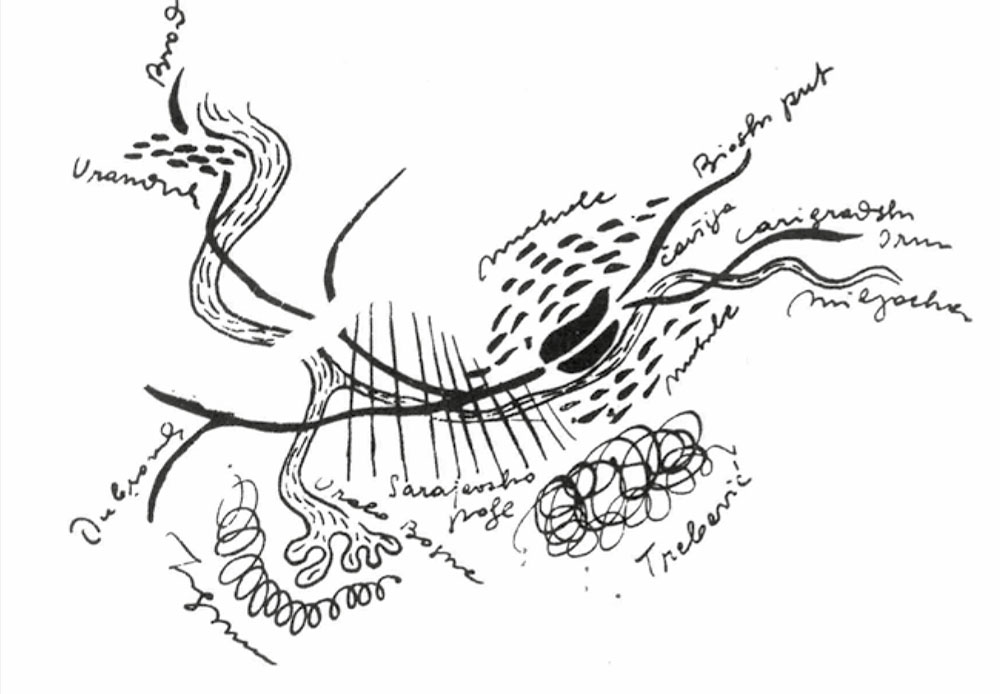Juraj Neidhardt’s Sculptural Architecture of the 1960s within Regional Planning of Tourism
Downloads
DOI:
https://doi.org/10.52200/docomomo.72.11Keywords:
Juraj Neidhardt, Yugoslav modern architecture, Geography, Regional landscape, Regional planning, Synthesis of the ArtsAbstract
Some of Juraj Neidhardt’s most emblematic projects are situated in pristine, non-urban settings. From the Ski House in the pine forests of the Bosnian hills to the Hotel Agava immersed in the Mediterranean shrubbery of the Adriatic Coast, his designs in the landscape were key for him to define his architecture as seeking proximity to and harmony with nature. The design strategy that Neidhardt utilized to realize this ambition was, however, far from constant. While in the 1950s, he relied solely on the “unwritten laws” of the vernacular models to define techniques of new design integration into the specific regional environment, in the 1960s, he produced a series of striking artistic compositions of natural and architectural visual elements, which he described with the notion of “phantasy in tourism.”
This paper analyzes Neidhardt’s writings and several projects of the 1950s and 1960s in order to situate his 1960s architecture excursus into the visual arts within the post-war discourse of the “synthesis of the arts.” Under the influence of his and Dušan Grabrijan’s geography-informed understanding of the unity between art, life, and the regional environment and his research in the regional planning of tourism (both presented in the book Architecture of Bosnia and the Way towards Modernity (Grabrijan & Neidhardt, 1957), Neidhardt developed an original architectural language that synthesized not only architecture and sculpture but also the specific regional landscape into one harmonious visual whole. This aesthetic synthesis, however, communicated a deeper synthesis between architecture, geographic region, and modern state economy, facilitated by the emerging regional planning as the ultimate absorption of the total environment into the comprehensive kind of modernism.
How to Cite
Published
Issue
Section
License
Copyright (c) 2024 Mejrema Zatrić

This work is licensed under a Creative Commons Attribution 4.0 International License.
Plaudit
References
ALIĆ, D. (2010). Transformations of the Oriental in the Architectural Work of Juraj Neidhardt and Dušan Grabrijan. [Doctoral Dissertation, University of New South Wales]. UNSWorks. https://doi.org/10.26190/unsworks/22973
DROSOS, N. (2016). Modernism with a Human Face: Synthesis of Art and Architecture in Eastern Europe, 1954-1958. [Doctoral Dissertation, The City University of New York]. CUNY Academic Works. https://academicworks.cuny.edu/gc_etds/1210/
GRABRIJAN, D., & Neidhardt, J. (1957). Arhitektura Bosne i put u suvremeno [Architecture of Bosnia and the Way towards Modernity]. Ljubljana: Državna založba Slovenije [State Publishing House of Slovenia].
MOOS, S. von. (2010). Art, Spectacle, and Permanence. Notes on Le Corbusier and the Synthesis of the Arts. Docomomo Journal, 42, pp. 91-99. DOI: https://doi.org/10.52200/42.A.9QDJIPBO
NEIDHARDT, J. (1967, October 19). Kao himna prirodi [Kao’s anthem to nature]. Oslobodjenje, p. 72.
NEIDHARDT, J. (1967). Naš ambijent—Fantazija u turizmu [Our ambition - Fantasy in tourism]. Printed pamphlet. Juraj Neidhardt’s private archive, Akademija nauka i umjetnosti Bosne i Hercegovine, Sarajevo, Bosnia and Herzegovina.
NEIDHARDT, J. (1974). Fauna, flora i arhitektura kao cjelina. [Fauna, flora and architecture as a whole]. Biološki list, October/November (23), pp. 17-19.
OACKMAN, J. (1993). 1945: Ineffable Space, Le Corbusier. In J. Oackman (Ed). Architecture Culture 1943-1968: A Documentary Anthology (pp. 64-65). New York: Columbia Books of Architecture-Rizzoli.
TORRENT, H. (2010). On Modern Architecture and Synthesis of the Arts: Dilemmas, Approaches, Vicissitudes. Docomomo Journal, 42, pp. 7-13. DOI: https://doi.org/10.52200/42.A.CYZLHO7G
ZATRIĆ, M. (2018). Architecture of Bosnia and the Way towards Modernity. In M. Stierli and V. Kulić (Eds), Towards a Concrete Utopia: Architecture in Yugoslavia 1948-1980 (pp.128-131). New York: Museum of Modern Art.
ZATRIĆ, M. (2020). Geography of Architecture and “the Way to Modernity”: Juraj Neidhardt’s Regionalism in Early Socialist Yugoslavia. [Doctoral Dissertation, ETH Zürich].





